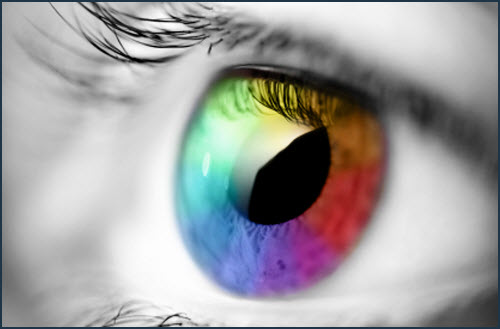This article was reprinted with permission from “Efficient Vision”, a newsletter of the Optometric Extension Program (OEP). For further reading on visualization try Using Your Powers of Visualization by Emily Bradley Lyons.
 When you recall a memory, daydream, or picture an event, you are using visualization. Visualization is one of the most important visual skills. When somebody tells you a story or gives you instructions, do you often say “I see” when you mean “I understand?”
When you recall a memory, daydream, or picture an event, you are using visualization. Visualization is one of the most important visual skills. When somebody tells you a story or gives you instructions, do you often say “I see” when you mean “I understand?”
That’s because your ability to understand others often depends on your ability to visualize or actually “see” what they are saying. These processes use the part of the visual system called the mind’s eye. Your mind’s eye can be a useful tool in many academic activities including reading, spelling, arithmetic, organizing, and especially abstract thinking.
Spelling requires very strong visualization. Because the English language is confusing and the same sounds can have a variety of spellings, it is necessary to visualize the word to recall it and spell it correctly.
Think of the words neighbor, way, and yeah. All have long “a” sounds, but each is spelled differently. Once a student sees the word spelled correctly and it is put into long term memory in the mind’s eye, it is available for visual comparison and recall at a later date. Poor spellers cannot recall or visualize words as wholes.
Motor activities and organization require visualization. Athletes make plays in their minds’ eye before they actually do them in reality. Well-organized people pre-plan mentally before moving through their tasks. The ability to visualize allows you to integrate thoughts with past, present and future actions. Looking for something requires a visual image to be used for comparison.
The ability to visualize can be improved with practice. Activities that focus on other senses will help make visualization stronger. Focus on taste. Ask a child to compare tastes of foods. Focus on smell. Compare the scents of perfumes, foods, spices or the air. Use language to describe the differences.
Choose a day to try listening to sounds. Ask a child to focus on dogs barking, birds tweeting, the hum of fluorescent lights. Listen to various types of music. Why does some music relax while other tunes irritate?
Touch is the sense that many children depend upon for a majority of information. Help youngsters distinguish tactile differences. Involve them daily in activities that stimulate their skin such as walking barefoot, finger-painting with shaving cream, playing in the sand, using bubble bath, brushing with a surgical scrub brush.
All of these activities stimulate visualization by helping to imprint sensory experiences on the brain. Visual images then become more available. Help children be aware of colors, shapes, sizes, textures, facial expressions and other visual expressions. Soon they will see just-noticeable differences.
Daily practice of about twenty minutes can help develop the mind’s eye. Sit quietly, remove distractions and close your eyes. Take ten deep breaths to relax the body, and then let yourself remember a safe place.
Recall every pleasant experience about that place, using all five senses: touch, smell, hearing, taste, and, of course, vision. Add music if that enhances your visualizing skills. How did it feel? Was there a breeze? Was it hot or cold? How did it smell? What was around you? What colors were prevalent? Be very specific.
When you feel your place is complete, tuck it carefully away and slowly come back to the place you are sitting. You can now return there any time. When you are at work, and have a few minutes, you can be there instantly.
Children can escape to their safe places as stress reducers, too. As people learn to visualize, they see and observe the world in different ways. Learning, listening, reading are more enjoyable and much can be taken in with far less effort in much less time. Visualization is a tool that can be applied in a productive and effective way to virtually every aspect of life.
For further reading on visualization try Using Your Powers of Visualization by Emily Bradley Lyons.
